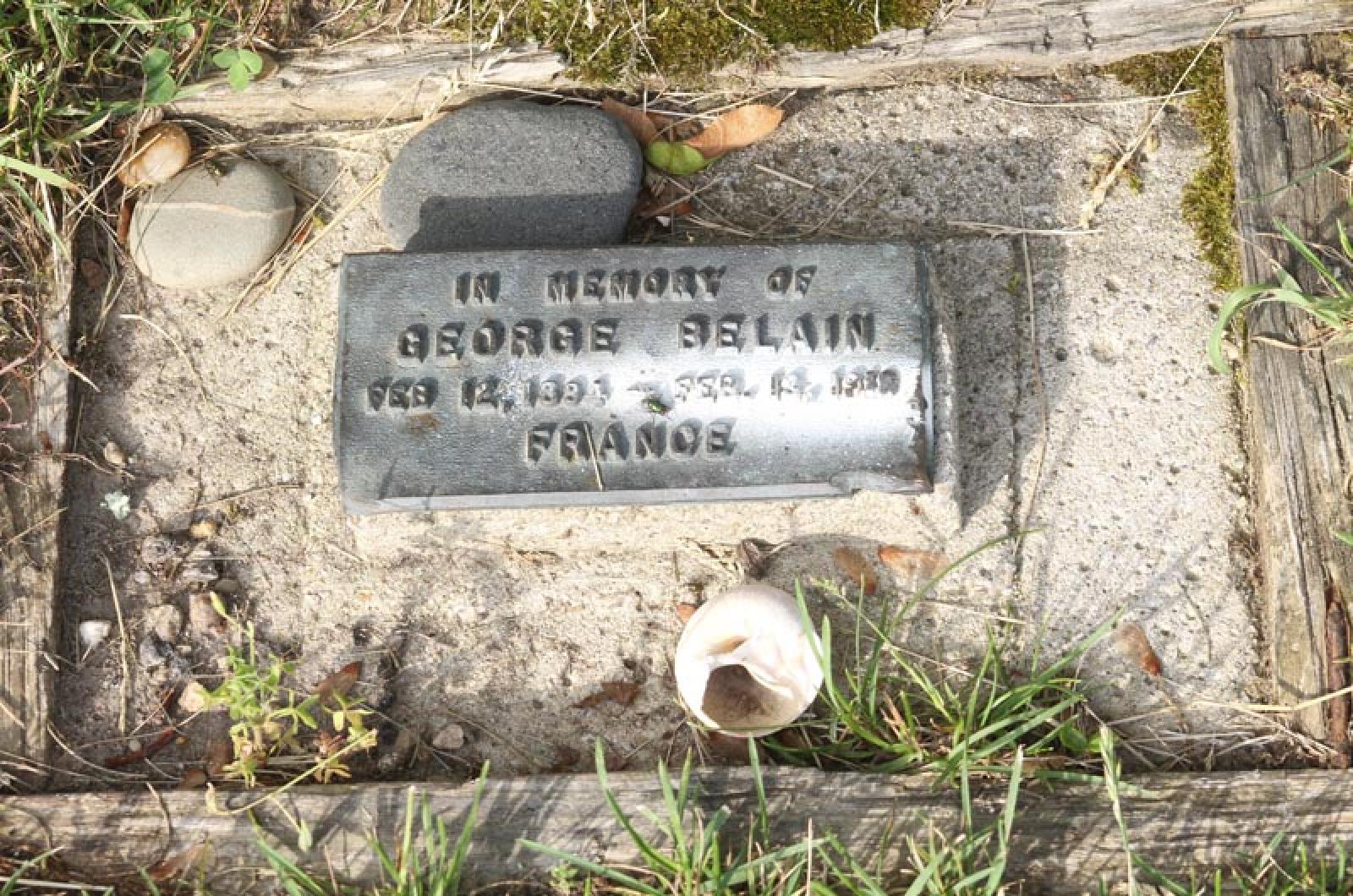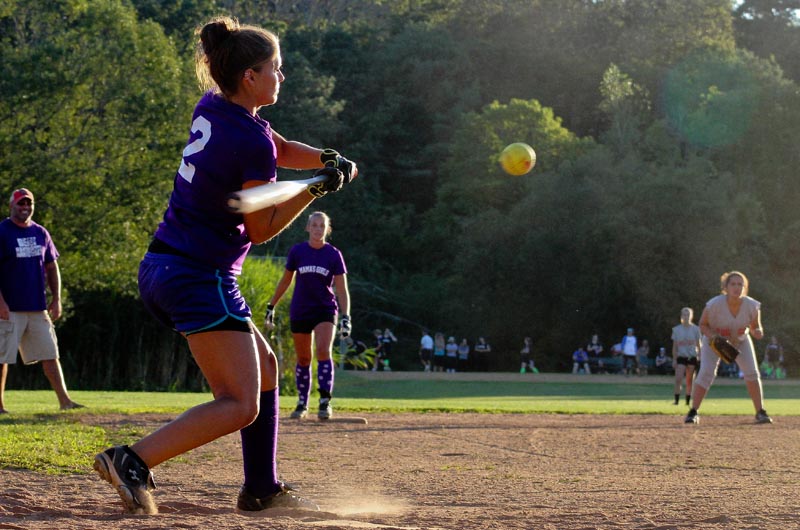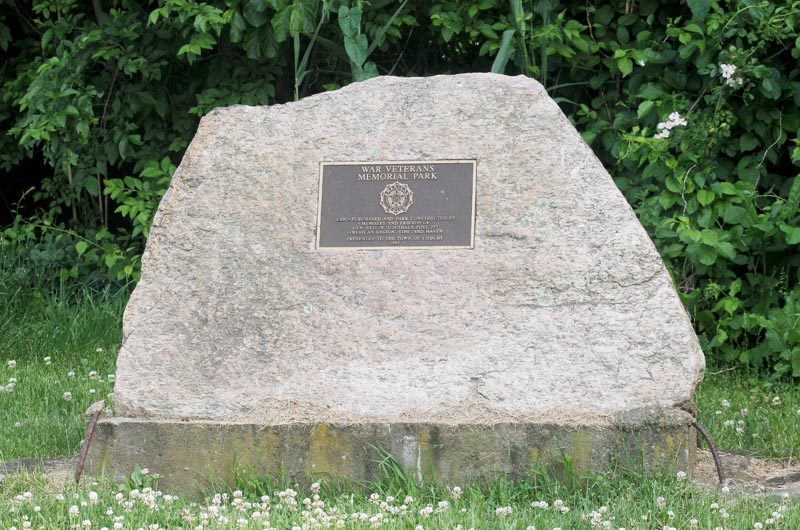Veterans Park in Vineyard Haven is a sea of trimmed green grass broken up by pockets of sand, dirt and woodchips — volleyball courts, softball fields and playgrounds. The park comes alive in late afternoon as youth soccer teams run practice drills and 20-somethings play pickup volleyball. Softball leagues take over the bases later in the evening, and adult soccer teams take the place of the youngsters on the pitch. Come at the right time of day and there’s much to take in. So much that certain things get overlooked.
One large rock at the back of the park next to one of the two softball fields bears a small plaque.
“Land purchased and park constructed by members and friends of the Gen. Geo. W. Goethals American Legion Post 257,” the first line reads. “Presented to the town of Tisbury, 1964.”

Hundreds of people walk past that rock without taking note of these words. But earlier this year, a sharp-eyed town resident, Mike Flynn, stopped to read the plaque while on a winter walk. He called Dukes County veterans agent Jo Ann Murphy, noting that it had been 50 years since the park had been given to the town. That phone call kick-started an effort to commemorate the anniversary.
On Saturday, which is Flag Day, a parade featuring the Northeast Navy Marching Band of Newport, R.I., steps off at 11 a.m. from St. Augustine’s Church in Vineyard Haven. Veterans, color guards and town officials will also participate in the parade, and Boy Scouts will be selling flags donated by the American Legion.
The rededication of the park takes place at Veterans Park immediately after the parade. The Navy Band will play a free concert at the Tabernacle at 7 p.m. on Saturday.
“I can’t think of a more fitting thing,” American Legion member Edson Rodgers told the Gazette on Tuesday. Mr. Rodgers was in the Navy Band for 30 years before retiring, and hit upon the idea of inviting the Newport group after talking to Ms. Murphy and other Legion members. He had been wanting to bring the band to the Vineyard, but didn’t know when would be best.
“The lights went on in my noggin,” Mr. Rodgers said. “I actually wanted to get them on Memorial Day.” The band had a previous engagement that weekend, he said, so “the next day that jumped out on the calendar was Flag Day.” Coordinating lodging for the band proved tricky because most hotels had filled up already, but an arrangement
was reached with Vineyard Harbor Motel general manager Marcia Moore.
Reached on Thursday, Navy Band Lieut. Cmdr. Carl Gerhard said that he could not recall a time when the band had played on the Vineyard before.
He promised a “great show” for those in attendance at the Tabernacle. The set list features a variety of music “from classical, contemporary, Dixieland and swing, and, of course, extremely patriotic songs,” Lieutenant Commander Gerhard said.
“I’m really, really excited about it,” Mr. Rodgers said.
Mr. Rodgers was a boy when the effort to build the park first began.
“I used to play down there in what is now the park area,” he said. “It was all cattails.”
War Veterans Memorial Park was the brainchild of the Legionnaires of Post 257, having decided that “a park area of playing fields and playgrounds was more suitable than bronze and granite as a memorial to the men who died in the wars,” according to a fundraising pamphlet.
The idea of building a public park in town had been broached before, and a committee had been formed to investigate the matter, according to a Gazette article. But while nobody spoke out against the plan, nobody took charge of further development.
“The whole idea might have died a natural death had it not been for the Legion post,” the article noted.
The spot designated for building a park was “a large acreage, sometimes flooded by storm tides, with Mud Creek running along a portion,” a 1951 article in the Gazette said. Ten plots of land were acquired to create the park, with Henry Cronig and Clifford Luce donating two plots outright.
A massive volunteer effort to construct a park out of a marsh ensued (building Veterans Park would not be possible today, given wetlands regulations). “Seldom in Island history has anything like this taken place, the project having attained the status of an all-Island effort,” a 1952 piece noted. “Four Island towns were represented in the workforce on Sunday, and if the work on the Sabbath be questioned, it should be explained that Sunday is the only day that the majority of the men can devote to the work.”
The story went on: “Recruited from just about every calling and profession, from fishermen to bank clerks, they are giving their time and labor.”
A total of 60,000 cubic yards of earth was brought in to create the fields, and a brand new drainage system installed to cope with the storm tides. On Armistice Day, 1953, the park was officially dedicated, although the project was not yet complete.
Fundraising to build the park was carried out by members of the Legion, through “ham-and-bean suppers, dances, auctions and entertainment,” according to the pamphlet. Anonymous donations — some as much as $5,000 — helped the cause, as did “contributions . . . by generous Vineyarders, year-round and summer residents.” In the first eight years of fundraising, more than $30,000 was raised for the cause.
It took 12 years to finish building the park, and in 1964, “without fanfare of any kind,” Manuel M. Maciel, chairman of the Tisbury selectmen, was presented with the deed to the park, along with $6,000 for future improvements.
“The transfer of the park to the town gives the town the only actual park it has ever known,” the Gazette wrote. “It represents the generosity of many permanent and seasonal Island residents who have contributed largely to the cost of the undertaking, which has transformed a tidal marsh and swamp into a park of which any town might be proud.” And 50 years later, the transfer will get its long-due fanfare.









Comments
Comment policy »